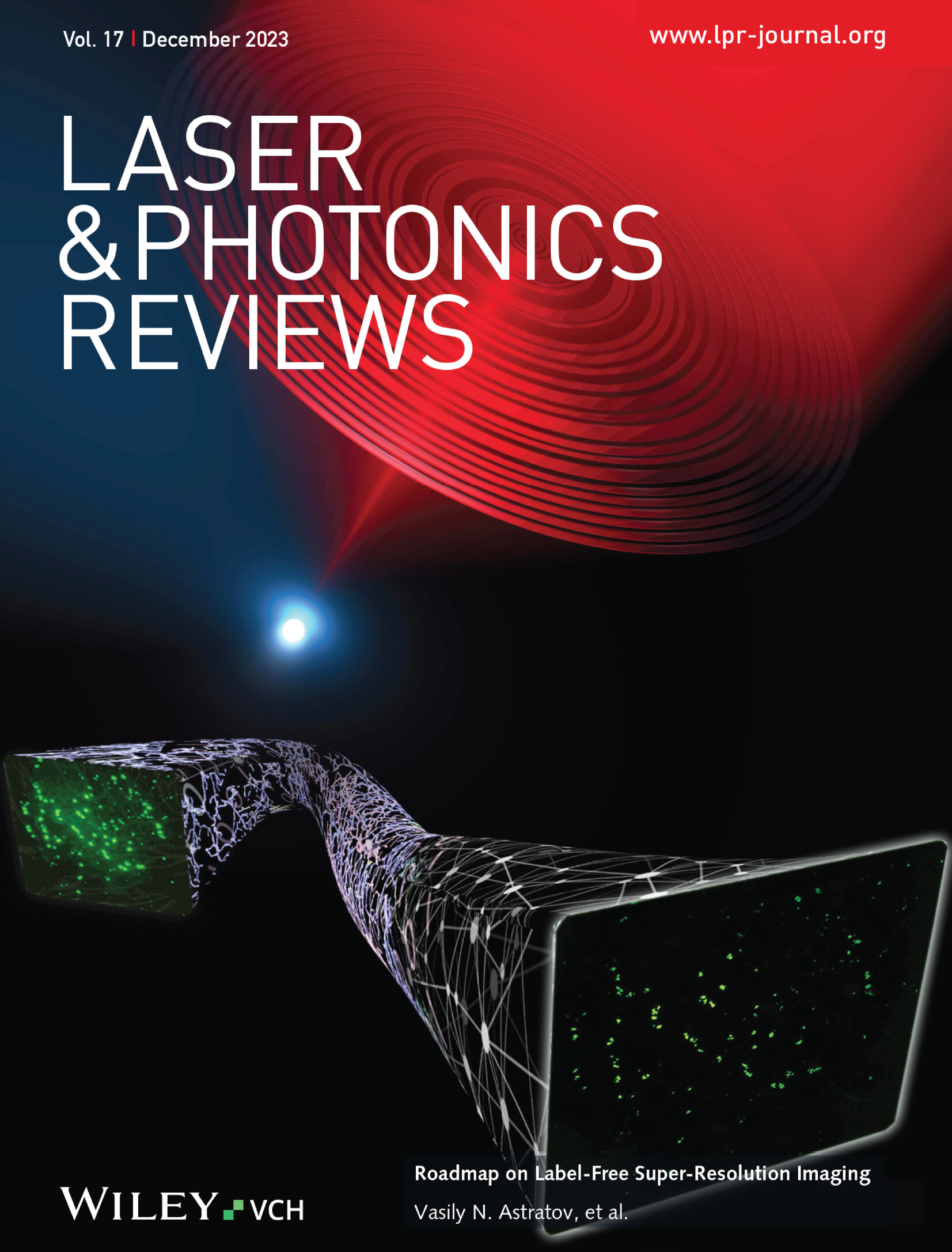蓝相液晶中可调晶格对称性的定量三维衍射光学
IF 9.8
1区 物理与天体物理
Q1 OPTICS
引用次数: 0
摘要
蓝相液晶(bplc)具有独特的3D周期性手性结构和非凡的光学操作能力,在柔性显示、高安全性加密和智能传感器方面显示出相当大的潜力。尽管bplc的晶格变形广泛存在于各种应用中,但理解不同变形模式与所产生的三维衍射光学之间的定量关系仍然是一个挑战。本文提出了一种基于空间几何建模的通用仿真策略,以实现bplc动态光学响应的实时计算。该框架系统地解释和预测了对称晶格变形(由手性掺杂剂浓度控制)和不对称晶格变形(由相分离或组分色散引起)下的光学特性。在科塞尔衍射分析中揭示了这些变形的微分非线性光学效应。此外,表面/截面结构颜色(光子带隙)的各向异性调制和对全空间光场的角度依赖控制通过在晶格对称约束下裁剪面间距和面取向来证明。本研究为设计下一代基于BPLC的光子器件奠定了理论基础,包括全息显示器、全光开关、集成波导和3D激光系统。本文章由计算机程序翻译,如有差异,请以英文原文为准。
Quantitative 3D Diffractive Optics for Tunable Lattice Symmetry in Blue‐Phase Liquid Crystals
Blue‐phase liquid crystals (BPLCs) possess unique 3D periodic chiral structures and extraordinary optical manipulation capabilities, demonstrating considerable potential in flexible displays, high‐security encryption, and intelligent sensors. Despite lattice deformations of BPLCs widely exist in various applications, there remains a challenge to understanding the quantitative relationship between different deformation modes and resulting 3D diffractive optics. Herein, a universal simulation strategy is proposed based on spatial geometry modeling to enable real‐time computation of dynamic optical responses in BPLCs. This framework systematically interprets and predicts the optical characteristics under both symmetric lattice deformations (governed by chiral dopant concentration) and asymmetric lattice deformations (induced by phase separation or component dispersion). Differentiated nonlinear optical effects are revealed for these deformations in Kossel diffraction analysis. Furthermore, anisotropic modulation of surface/sectional structural colors (photonic bandgaps) and angle‐dependent control over the full spatial light field is demonstrated by tailoring interplanar spacing and facet orientation within the lattice symmetry constraints. This study establishes a theoretical foundation for designing next‐generation BPLC‐based photonic devices, including holographic displays, all‐optical switches, integrated waveguides, and 3D lasing systems.
求助全文
通过发布文献求助,成功后即可免费获取论文全文。
去求助
来源期刊
CiteScore
14.20
自引率
5.50%
发文量
314
审稿时长
2 months
期刊介绍:
Laser & Photonics Reviews is a reputable journal that publishes high-quality Reviews, original Research Articles, and Perspectives in the field of photonics and optics. It covers both theoretical and experimental aspects, including recent groundbreaking research, specific advancements, and innovative applications.
As evidence of its impact and recognition, Laser & Photonics Reviews boasts a remarkable 2022 Impact Factor of 11.0, according to the Journal Citation Reports from Clarivate Analytics (2023). Moreover, it holds impressive rankings in the InCites Journal Citation Reports: in 2021, it was ranked 6th out of 101 in the field of Optics, 15th out of 161 in Applied Physics, and 12th out of 69 in Condensed Matter Physics.
The journal uses the ISSN numbers 1863-8880 for print and 1863-8899 for online publications.

 求助内容:
求助内容: 应助结果提醒方式:
应助结果提醒方式:


